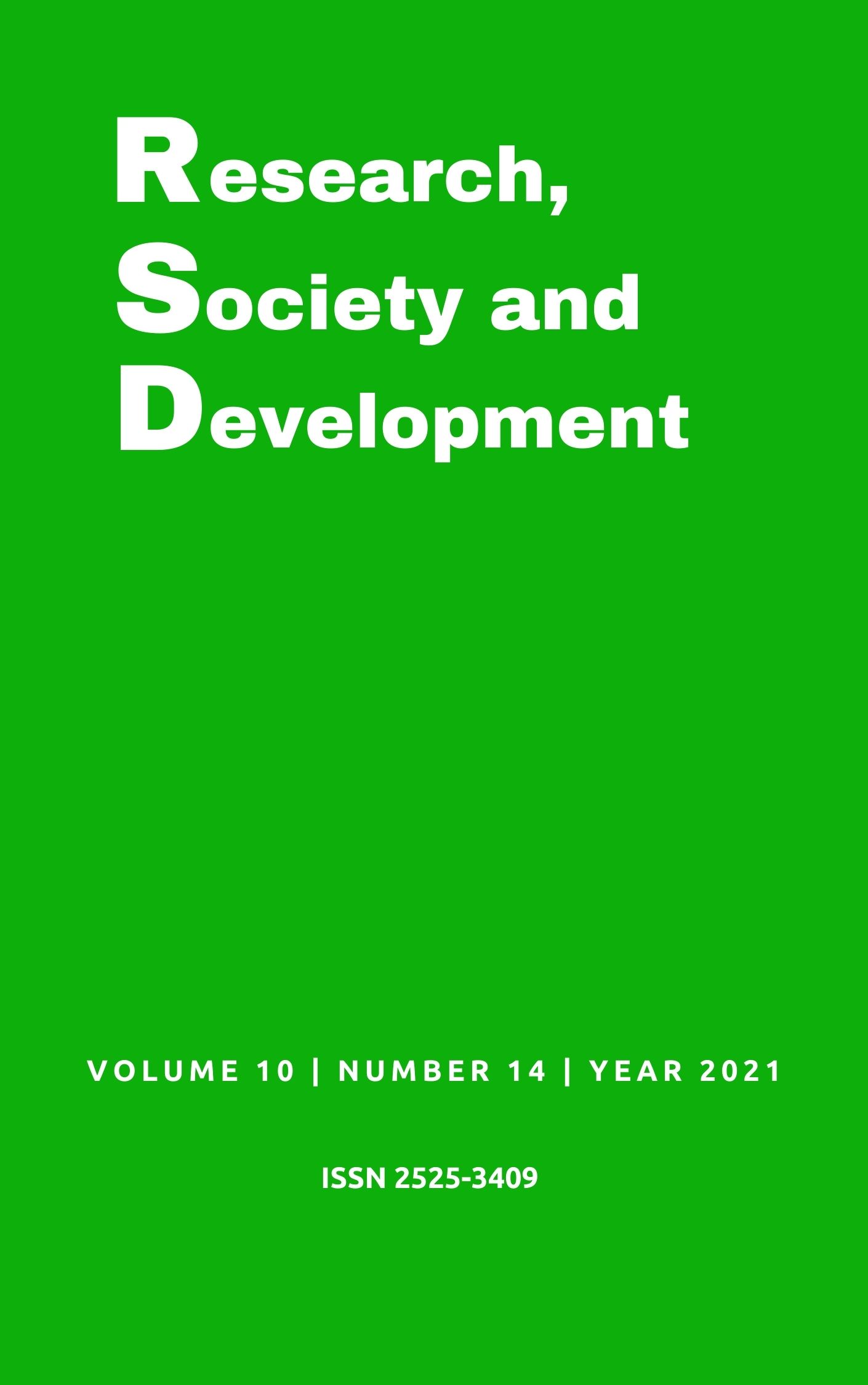Cannabidiol: brief compilation over a versatile molecule
DOI:
https://doi.org/10.33448/rsd-v10i14.22239Keywords:
Cannabidiol, Therapeutic use, Cannabis, Central Nervous System.Abstract
Cannabis sativa has been applied for medicinal purposes for thousands of years. Cannabidiol is the main non-psychotropic compound in Cannabis sativa, and has its therapeutic effect extremely linked to the central nervous system, presenting pharmacological properties with great potential for the treatment of several pathologies. The aim is to identify and relate the therapeutic effects of cannabidiol in medicine, focusing on its therapeutic potential in epilepsy, autism, Parkinson's disease, Alzheimer's disease, oncological diseases, and chronic pain. In addition to presenting a brief history of cannabidiol and its chemical and pharmacological properties acting on the Central Nervous System. Integrative literature review, where articles were reviewed in Portuguese and English, based on PubMed, Scielo and Public Agencies. In 1960, the chemical structures of the main components of cannabis were identified, characterizing cannabidiol as a cannabinoid, which binds to cannabinoid receptors throughout the human body, known as CB1 and CB2. The endocannabinoid system, described in 1990, further demonstrated the therapeutic properties of cannabidiol, elucidating its neuroprotective, antiepileptic, anxiolytic, antipsychotic, anti- inflammatory, anti-tumor, antioxidant, and anticonvulsant properties. Cannabinoids may, in the future, be an important therapeutic option in the treatment of Parkinson's and Alzheimer's diseases, epilepsy, autism, neoplasms and still acting in the relief of pain. This is due to the absence of psychoactive effects and cognition, safety, good tolerability, clinical trials with positive results and the wide spectrum of pharmacological actions.
References
Abrams, D. I. (2018). The therapeutic effects of Cannabis and cannabinoids: an update from the National Academies of Sciences, Engineering and Medicine report. European Journal of Internal Medicine, 49, 7–11. https://doi.org/10.1016/j.ejim.2018.01.003
Ascenção, M. D., Lustosa, V. R. & da Silva, L (2016). J. Cannabinoids in the treatment of chronic pain. Rev Med Saude Brasilia, 5 (3), 255-63
Bonfá, L., Vinagre, R. C. O. & Figueiredo, N. V. (2008). Cannabinoid use in chronic pain and palliative care. Rev. Bras. Anestesiol, 58(3). https://doi.org/10.1590/S0034-70942008000300010
Casey, S. & Vaughan, C. W. (2018). Plant-Based Cannabinoids for the Treatment of Chronic Neuropathic Pain. Medicines, 5(3), 67. https://doi.org/10.3390/medicines5030067
Couch, D.G.; Tasker, C.; Theophilidou, E. et al (2017). Cannabidiol and palmitoylethanolamide are anti-inflammatory in the acutely inflamed human colon. Clin Sci, 131(21), 2611-2626. https://doi.org/10.1042/CS20171288.
Crippa, J. A. S.; Zuardi, A. W.; Hallak, J. E. C. (2010). Therapeutic use of cannabinoids in psychiatry. Rev. Bras. Psychiatrist, 32(1). https://doi.org/10.1590/S1516- 44462010000500009
de Faria, S. M.; Fabricio, D. M.; Tumas, V. et al (2020). Effects of acute administration of Cannabidiol on anxiety and tremors induced by the public speaking simulation test in patients with Parkinson's disease. J Psychopharmacol, 34(2), 189-196. http://doi: 10.1177/0269881119895536
dos Santos, R.G.; Hallak, J.E.C.; Crippa1, J.A.S. (2018). The use of cannabidiol (CBD) in the treatment of Parkinson's disease and its comorbidities. Rev Med, 98(1), 46-51. https://doi.org/10.11606/issn.1679-9836.v98i1p46-51
Giacoppo, S.; Mandolino, G.; Galuppo, M. et. al. (2014). Cannabinoids: New promising agents in the treatment of neurological diseases. Molecules, 19(11), 18781-18816, https://doi.org/10.3390/molecules191118781
Gontijo, E.C.; Castro, G. L; Petito, A. D. C. et. al (2016). Cannabidiol and its therapeutic applications. Refacer, 5(1). https://doi.org/10.36607/refacer.v5i1.3360
Johnson, J.R.; Burnell-Nugent, M.; Lossignol, D. et. al. (2010). Multicenter, Double-Blind, Randomized, Placebo Controlled, Parallel-Group Study of the Efficacy, Safety, and Tolerability of THC: CBD Extract and THC Extract in Patients with Intractable Cancer-Related Pain. Journal of Pain and Symptom Management, 39 (2), 167–179. https://doi.org/10.1016/j.jpainsymman.2009.06.008
Lopes, R.M. (2014).Canabinoides help to uncover common etiological aspects and bring hope for the treatment of autism and epilepsy. Revista da Biologia, 13(1), 43-59. https://doi.org/10.7594/revbio.13.01.07
Matos, R.L.A.; Spinola, L. A.; Barboza, L. L. et al (2017). The Use of Cannabidiol in the Treatment of Epilepsy. Rev. Virtual Quim., 9 (2), 786-814. https://doi.org/10.21577/1984- 6835.20170049
Massi, P.; Solinas, M.; Cinquina, V. et. al. (2013). Cannabidiol as potential anticancer drug. British Journal of Clinical Pharmacology, 75(2), 303–312. https://doi.org/10.1111/j.1365- 2125.2012.04298.x.
Oliveira, A.D.C. & Pottker, C. A. (2019). Considerations about Canabidiol in the psychotherapeutic process of children with autistic spectrum disorder. Rev. UNINGÁ Review, 34(4), 24-37. https://doi.org/10.46311/2178-2571.34.4.024-037
Pereira, F.A.; Torres, A. C.; Philadelpho, V. O. et. al (2018). Effects of Canabidiol on the frequency of epileptic crisis: a systematic review. Brazilian Journal of Neurology and Psychiatry, 22(1), 86-100
Santos, A.B.; Scherf, J.; Mendes, R. C. (2019). Efficacy of cannabidiol in the treatment of seizures and diseases of the central nervous system: systematic review. Acta Brasiliensis, 3(1), 30-34. http://doi.org/10.22571/10.22571/2526-4338131
Silva, D. O. F.; Reis, M. C.; Santos, B. E. M. et al (2017). The Use of Cannabidiol in the Treatment of Anxiety. Rev Med Saude Brasilia; 6(2), 255-60.
Silva, R.C et. Al (2019). Use of Canabidiol in the treatment and prevention of Alzheimer's evil: scientific and technological prospection. ISTI/SIMTEC, 10(1), 912-921. https://doi.org/10.7198/S2318-3403201900010937
Szabady, R.L.; Louissaint, C.; Lubben, A. et al (2018). Intestinal P-glycoprotein exports endocannabinoids to prevent inflammation and maintain homeostasis. J Clin Invest, 128(9):4044-4056. https://doi.org/10.1172/JCI96817.
Downloads
Published
Issue
Section
License
Copyright (c) 2021 Caico Bruno Curcio Oliva de Paula; Enzo Andrade Baldacci; Lucas Chen Cheng; Mateus Bulbow Gozzi; Pedro Torquato Shibuya; Lucas Antonio Duarte Nicolau; Jand Venes Rolim Medeiros; Renato Anghinah; Juliane Vismari de Oliveira; Flávia de Sousa Gehrke; Francisco Sandro Menezes-Rodrigues

This work is licensed under a Creative Commons Attribution 4.0 International License.
Authors who publish with this journal agree to the following terms:
1) Authors retain copyright and grant the journal right of first publication with the work simultaneously licensed under a Creative Commons Attribution License that allows others to share the work with an acknowledgement of the work's authorship and initial publication in this journal.
2) Authors are able to enter into separate, additional contractual arrangements for the non-exclusive distribution of the journal's published version of the work (e.g., post it to an institutional repository or publish it in a book), with an acknowledgement of its initial publication in this journal.
3) Authors are permitted and encouraged to post their work online (e.g., in institutional repositories or on their website) prior to and during the submission process, as it can lead to productive exchanges, as well as earlier and greater citation of published work.


